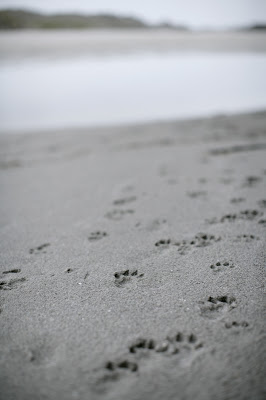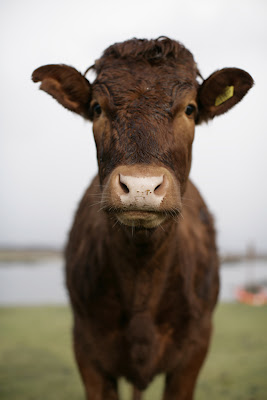
Image Left: Jefferson, Cleaning Mussels
Tuesday 10th March
I dropped Jefferson outside the Iona ferry terminal and bus stop in Fionnphort, he was heading in the other direction for an evening in Oban before travelling on to Forres. We walked onto the slipway and I pointed out the abbey while explaining that St. Columba its founder was supposed to have been the first missionary to bring Christianity to Scotland. Our conversation was interrupted by a middle-aged man who stepped in to correct me, apparently St. Ninian beat Columba by a hundred years in the race to convert the pagan Scots. The man was obviously employed as a minor official in the corrections and errors department of the government. I imagined they had flown him in to stand on the slipway and correct any of the inaccuracies within the conversations of passers-by. We left the strange slipway man with his trench coat and brown leather brief case to point out errors for others, like the local fisherman who tie up here to unload their catches.

Jefferson had been staying for a week’s work exchange from another community based at Newbold House near Findhorn. Originally from Brazil he had lived in America for a while before moving to Italy and eventually Scotland. Having found out he was supplementing his income by working for an Italian restaurant we persuaded him to spend a bit of time in our kitchen. The results were almost too good and one point we thought about burning the boats to hinder his departure. When you have spent the best part of the winter eating at least four meals a week that include cabbage and then somebody comes along who makes it taste new and fresh, then praise is never enough. Before his departure he cooked a lunch for the community of fresh mussels and rice. We had collected the mussels from the bay on yesterday’s low tide and then cleaned them before leaving overnight in fresh water. With a morning of clear skies and light breezes it seemed appropriate to enjoy an alfresco lunch.
I warned Jefferson not to drink the local coffee before heading back to the small boat moored at Fidden jetty. In my absence the tide had raced in lifting the boat to the height of the stonework. I started the engine and chortled out into the becalmed estuary wondering whether to chance a fishing trip out in the sound. Instead I decide to spend what was left of the afternoon fixing the decking in reliance our main boat, which is still out the water for repairs and a much needed paint job.
From the shade of pier boat shed the beaches and small lagoons shone in the afternoon sunlight. I worked with my back to landscape occasionally catching glimpses between saw strokes. At four o’clock I was back in the boat to collect Phil and the children from the school run. A photography student we had been expecting had also arrived with her friend and mound of equipment, I made two trips and then showed them a place to camp. Inspired by the presence of another photographer on the island I took an after dinner stroll to the observatory as a full moon rose over the heather.
Image Above Right: Heather painting Reliance
Image below: Full moon at the observatory

 Image Left: Otter tracks, mother and cubs
Image Left: Otter tracks, mother and cubs








